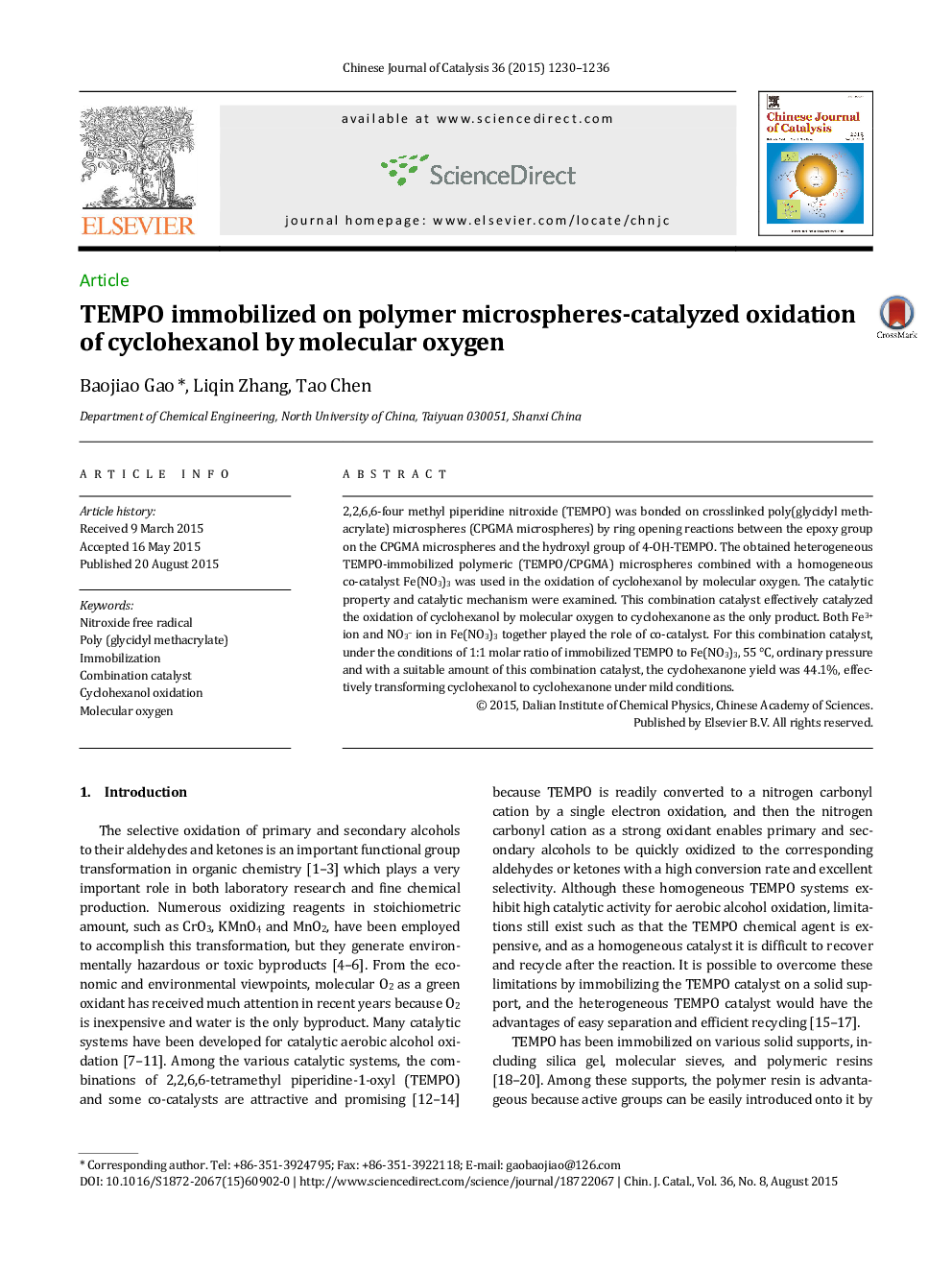| Article ID | Journal | Published Year | Pages | File Type |
|---|---|---|---|---|
| 59479 | Chinese Journal of Catalysis | 2015 | 6 Pages |
2,2,6,6-four methyl piperidine nitroxide (TEMPO) was bonded on crosslinked poly(glycidyl methacrylate) microspheres (CPGMA microspheres) by ring opening reactions between the epoxy group on the CPGMA microspheres and the hydroxyl group of 4-OH-TEMPO. The obtained heterogeneous TEMPO-immobilized polymeric (TEMPO/CPGMA) microspheres combined with a homogeneous co-catalyst Fe(NO3)3 was used in the oxidation of cyclohexanol by molecular oxygen. The catalytic property and catalytic mechanism were examined. This combination catalyst effectively catalyzed the oxidation of cyclohexanol by molecular oxygen to cyclohexanone as the only product. Both Fe3+ ion and NO3− ion in Fe(NO3)3 together played the role of co-catalyst. For this combination catalyst, under the conditions of 1:1 molar ratio of immobilized TEMPO to Fe(NO3)3, 55 °C, ordinary pressure and with a suitable amount of this combination catalyst, the cyclohexanone yield was 44.1%, effectively transforming cyclohexanol to cyclohexanone under mild conditions.
Graphical AbstractTEMPO-immobilized polymeric microspheres, TEMPO/CPGMA microspheres, were prepared. A combination of the TEMPO/CPGMA microspheres as heterogenous catalyst and Fe(NO3)3 as homogenous co-catalyst was used in the oxidation of cyclohexanol by molecular oxygen. This combination catalyst effectively catalyzed the oxidation of cyclohexanol by molecular oxygen and cyclohexanol was transformed into cyclohexanone as the sole product.Figure optionsDownload full-size imageDownload as PowerPoint slide
